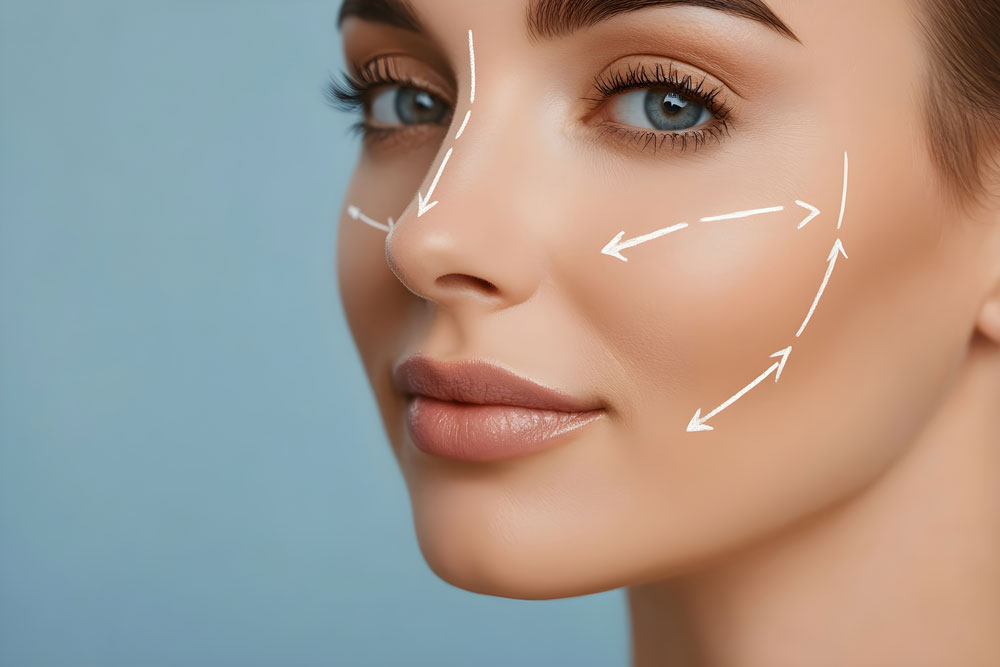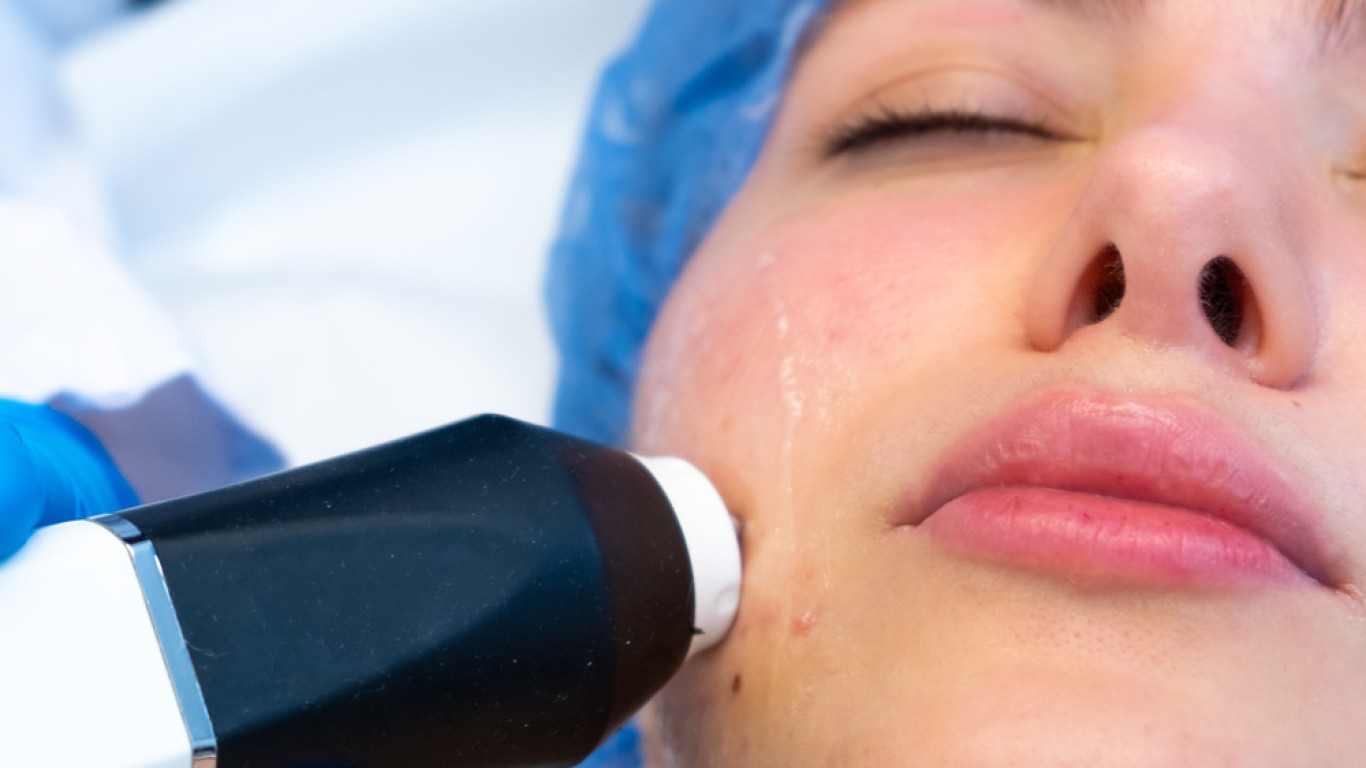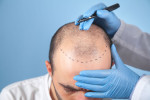Introduction
Saggy cheeks are one of the most noticeable signs of ageing. As skin loses elasticity, the midface begins to droop, creating jowls and a tired appearance. While normal with age, saggy cheeks can make people look older than they feel. Thankfully, modern cosmetic treatments - both surgical and non-surgical - offer solutions to restore youthful contours. Here we explore the most effective procedures for saggy cheeks and how they bring back definition and vibrancy.
Saggy Cheeks: Why Do They Sag?
Cheek sagging is caused by a combination of factors. With age, collagen and elastin break down, reducing skin firmness. Fat pads in the face also shift downward, altering natural volume. At the same time, bone structure subtly changes, providing less support. Lifestyle habits, weight changes, and genetics can also impact and accelerate the process. Altogether, these elements contribute to saggy cheeks, affecting both profile and expression.
Non-Surgical Treatments for Saggy Cheeks
For those seeking subtle changes, non-surgical treatments offer effective first steps.
- Dermal fillers restore lost volume by plumping hollow areas of the cheeks. They lift sagging tissue and create a smoother contour. Results are immediate and last several months to a year.
- Another option is thread lifts, which use dissolvable threads to physically lift sagging skin. While not permanent, thread lifts provide noticeable improvement with minimal downtime.
- Radiofrequency and ultrasound treatments are also popular, stimulating collagen for gradual tightening.
Surgical Solutions for Saggy Cheeks
For more dramatic and long-lasting results, surgical procedures are often recommended.
- A facelift remains the gold standard. By lifting and tightening deeper tissues, facelifts provide natural and enduring improvements.
- Midface lifts specifically target saggy cheeks, repositioning fat pads for restored youthfulness.
- Buccal fat removal may be combined if excess fullness weighs down the face.
Each surgery is tailored, ensuring results complement the patient’s natural features.

Saggy Cheeks: Fat Transfer for Natural Volume
Fat transfer is another powerful option for saggy cheeks. In this procedure, fat is taken from another part of the body. It is then purified and injected into the cheeks. Unlike fillers, fat grafting uses the patient’s own tissue, which integrates naturally. The added volume lifts sagging skin, smooths transitions and enhances contour. Many patients report enjoying long-lasting results that feel soft and authentic. It is often chosen by those who prefer a natural approach.
Combining Treatments for Better Results
Saggy cheeks rarely improve with one method alone. The process of combining treatments often creates the most balanced outcomes. For example, fillers may be paired with thread lifts for both volume and lift. Surgical patients may also choose to combine facelifts with fat transfer for fullness. Skin resurfacing treatments, such as laser or chemical peels, further enhance results by improving skin quality. Ultimately, these combinations address sagging from multiple angles, creating more youthful and harmonious results.
Recovery Expectations
Recovery depends on the procedure that’s been chosen. Fillers and thread lifts allow quick return to daily life. Swelling may appear but rest assured it usually fades within days. Surgical options will obviously involve longer recovery. Patients usually need a few weeks before resuming normal routines. During this time, swelling and bruising subside, revealing smoother contours. With proper aftercare and patience, results continue to improve for months. Most patients find the recovery process manageable and well worth the outcome.
Benefits of Treating Saggy Cheeks
The benefits will go way beyond aesthetics. Restoring cheek volume and lift creates a fresher, more youthful appearance. Patients often describe feeling more confident in social settings and photographs. At the same time, clothing and hairstyles may suddenly feel more flattering. Importantly, improvements also restore facial balance, making the features appear proportionate again. Many patients report that friends notice they “look well rested” without guessing they had treatment. The psychological impact is often just as meaningful as the physical change.
Cost of Saggy Cheek Treatments in 2025
The cost of treating saggy cheeks really depends on the procedure and location. In the UK, fillers typically cost £300 to £600 per session. Thread lifts range from £1,500 to £3,000. Surgical facelifts and midface lifts cost between £7,000 and £12,000. In the USA, prices are often higher, while Turkey offers more affordable options, with surgery costing £3,000 to £6,000. Costs reflect expertise, clinic facilities and aftercare. For many patients, the investment feels worthwhile given the longevity of results.
Psychological Impact of Cheek Rejuvenation
Patients often underestimate how saggy cheeks affect self-image. Many describe avoiding photos or feeling older than they are. After treatment, the shift can be truly transformative. Restored contours bring not just youthfulness but also renewed self-assurance. Some say they finally recognise themselves again in the mirror. The emotional lift can be as powerful as the physical one.
Saggy Cheeks vs General Facial Ageing
It’s worth noting that saggy cheeks are part of a larger ageing process. While targeted treatments help, they work best alongside holistic care. Addressing sagging in isolation may leave other areas, like the jawline or eyes, looking older. This is why surgeons often recommend a combined plan. By treating the face as a whole, results look natural and harmonious rather than piecemeal.
Conclusion
Saggy cheeks may appear an inevitable side effect of ageing for many. That said, modern treatments provide effective ways to restore shape and balance. There are quick, non-surgical fixes and more comprehensive surgical solutions. That means there’s something suited to every lifestyle and budget. The results reach beyond appearance, renewing confidence and self-image.
For more information about saggy cheeks and to book a consultation visit the ACIBADEM Beauty Center website.
Frequently Asked Questions
Ageing, genetics, weight changes, and loss of collagen contribute to sagging.
Yes, fillers, threads, and energy-based treatments offer non-surgical improvements.
Facelift and midface lift results can last ten years or more.
No, fillers are temporary and usually last six to twelve months.
Costs range from £300 for fillers to £12,000 for surgery, depending on location.














